Contents
Without the right media content, your website could end up looking uninteresting to new visitors. Although, if you incorporate video clips into your site, you can quickly capture the attention of potential customers, increase engagement, and ultimately increase your chance at closing more sales.
Worried you don’t have the technical skills to film and edit videos? Don’t be!
Anyone can become an expert in video marketing. Once you identify your audience, you can create videos that properly advertise your brand and its products. In the meantime, video can also improve your site’s design, conversions, and search engine optimization (SEO).
In this post, we’ll explain the benefits of using video on your website. Then, we’ll introduce one of our favorite video editing tools to help you create your first video in just 3 steps. Let’s dive in!
Why Should You Consider Using Video Marketing? The Benefits:
Over the past few years, video content has become increasingly popular. In 2021, over 3.2 billion internet users watched videos at least once per month. With the right marketing strategies, you can start engaging with these viewers.
Additionally, when used as testimonials, tutorials, or reviews, videos can help sell more products. Instead of making visitors read through long sections of text, they can visually capture your product description by watching your engaging video:

After A/B testing a landing page, EyeView concluded that videos led to 86% more conversions. Proving that video marketing is a valuable tool for bloggers, business owners, and affiliate marketers who want to push more sales on their websites.
Finally, videos can help improve search engine optimization (SEO) when visitors stay longer on your website to finish watching a video, your bounce rate decreases. This can also increase engagement, pushing you to the top of search results.
How to Create an Engaging Video that Sells (3 Steps)
Videos can transform your static website into an engaging experience for all visitors. So let’s get started on your new video marketing strategy!
Step 1: Define Your Target Audience
Before you start making new videos, you’ll want to consider your audience. This will help you decide what kind of content to create.
To help you find your audience, you can perform a target market analysis. Using a tool like Google Analytics, you’re able to discover your visitors’ demographics, including their location, age, gender, and language:
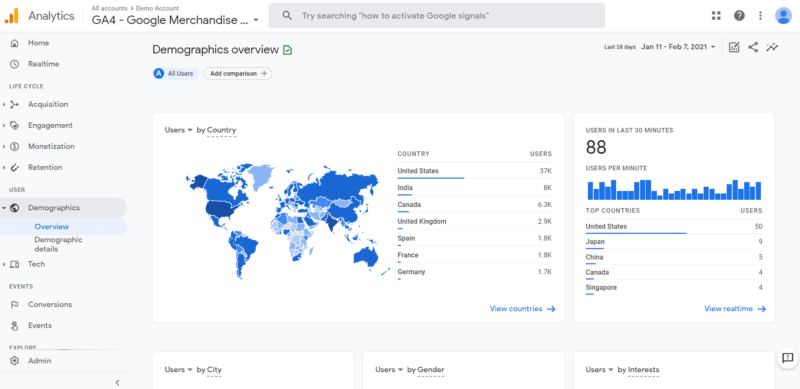
This will also tell you which web pages and products are the most popular. By identifying this information, you can easily define your audience and what attracts them to your website.
Your video marketing strategy will heavily depend on your audience. Before you start sourcing editing tools and creating media content, you’ll want to understand who the videos are for.
Step 2: Design Video Content
Once you understand your audience, it’s time to create your videos. If you’re looking for a beginner-friendly way to edit a video online, InVideo can be an effective video editing website. It has a free plan that includes over 5,000 video templates:
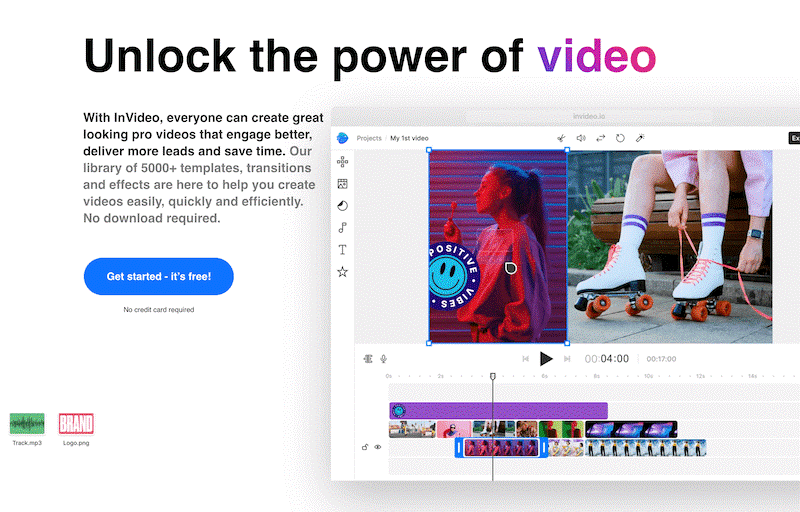
After creating an account, you can start by choosing one of these pre-designed templates. To find the right option, consider refining the results by a particular aspect ratio or content niche:

When you pick a video size, it’s important to consider where you’ll publish the content. Here are the main options and which platform they’re well-suited for:
- Landscape (16:9): YouTube
- Square (1:1): Instagram or Facebook feed
- Portrait (9:16): Instagram stories, reels, IGTV, or TikTok
Once you find the right option, be sure to select your template choice before you click Use Template:
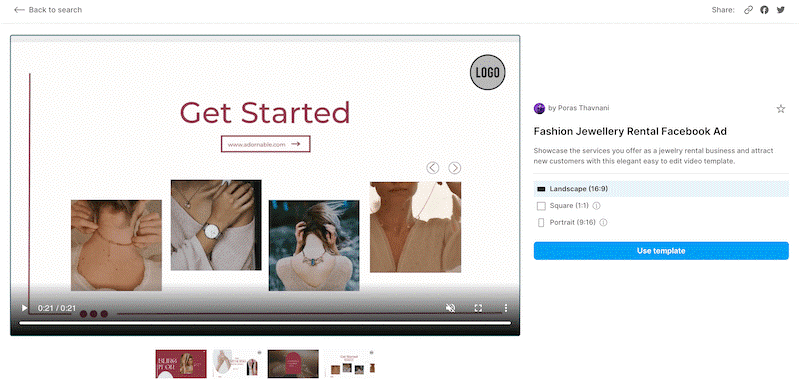
In the video editor, the template will automatically apply default videos, text, and music. By selecting My Media, you can upload your videos and images into the template:

Then, click on Trim video to fit scene to replace the template video. You can also drag and drop the trimmed section to upload the correct clip:

The top toolbar in the editor enables you to update text, font, spacing, colors, and animation. You can continue to customize these elements for every slide in your video:
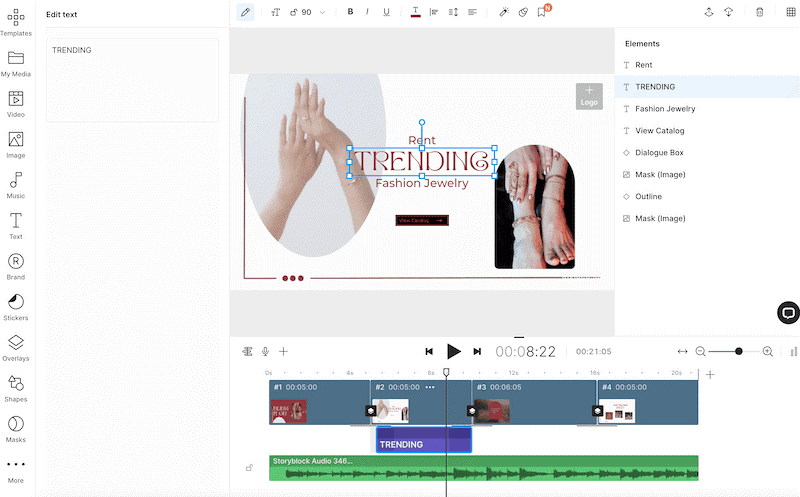
Depending on the template you use, you’ll be able to create product advertisements, announcements, tutorials, or listicles. Again, remember to always consider your content’s purpose and target audience during the process.
Step 3: Integrate Videos Into Your Website
After your video is fully designed, hit the Export button. Keep in mind that higher-quality videos will be cleaner and more credible:
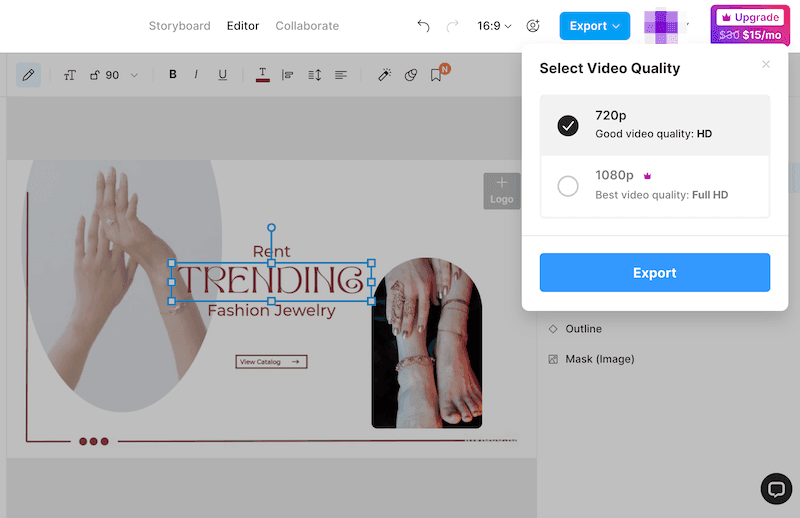
Once you export and download your new video, you may struggle to know exactly where to use it on your website. However, the best placement will vary for different types of content.
For example, product videos can be helpful on a shop page or blog posts related to the product. The clip can display your item being used:
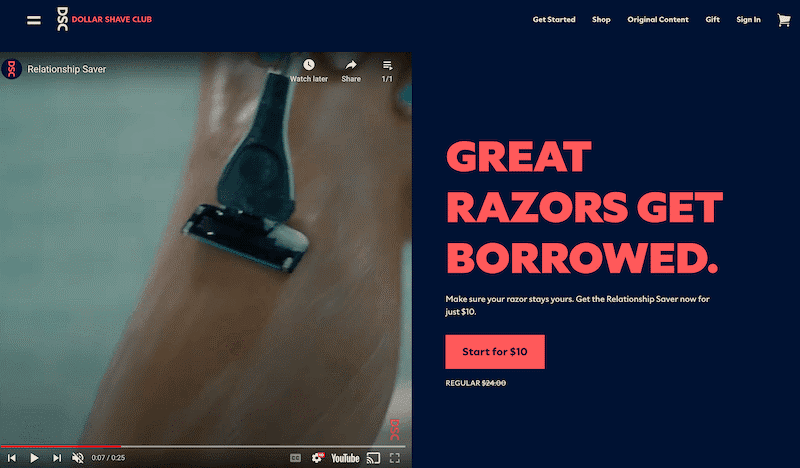
You could also set up an auto-playing video on your home page. If you want visitors to feel a particular emotion about your brand, it can help to immediately include an inspirational clip:

In addition to your customer testimonials page, you could go even further to collect interviews covering how happy customers use your product:

The best part is, you can easily integrate videos into WordPress no matter which option you choose. In any post or page, simply add a Video block and upload the file:

Keep in mind that you could also publish your video on a hosting platform like YouTube. This option will reduce the demand on your server’s resources. Then, you can add the clip to your page by clicking on Insert from URL.
Conclusion
If visitors leave your website without making purchases, you should consider integrating videos into your content. Engaging clips can properly introduce visitors to your brand, encourage engagement, and reduce bounce rates.
To review, here’s how you can get started with video marketing:
- Define your target audience.
- Design video content.
- Integrate videos into your website.
Do you have any questions about how to start using videos on your WordPress website? Ask us in the comments section!
If you liked this article, be sure to follow us on Facebook, Twitter, Pinterest, and LinkedIn! And don’t forget to subscribe in the box below.
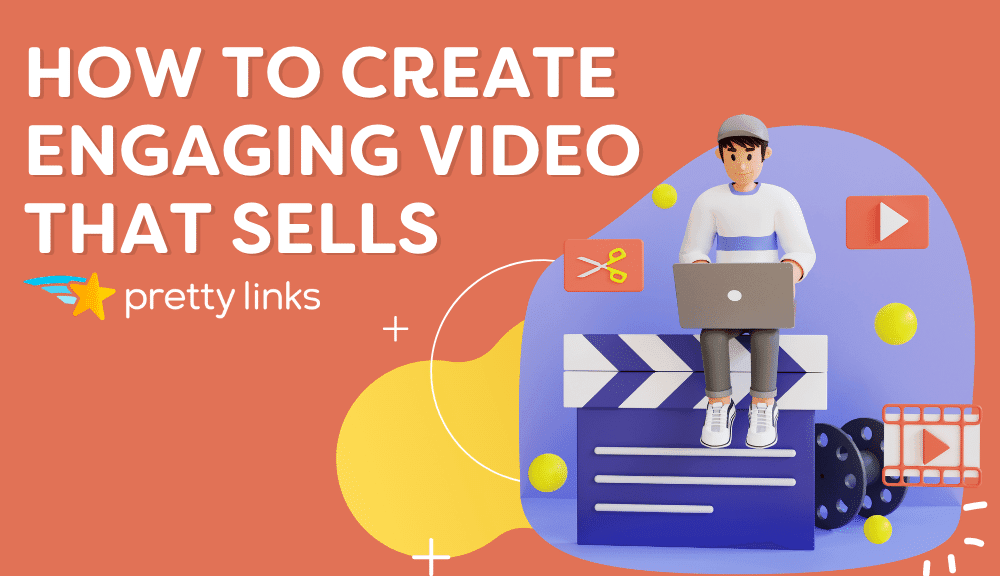







Leave a Reply